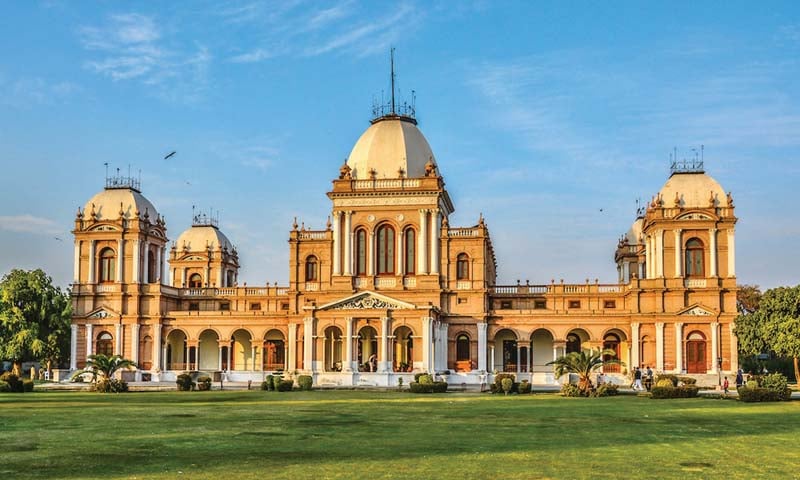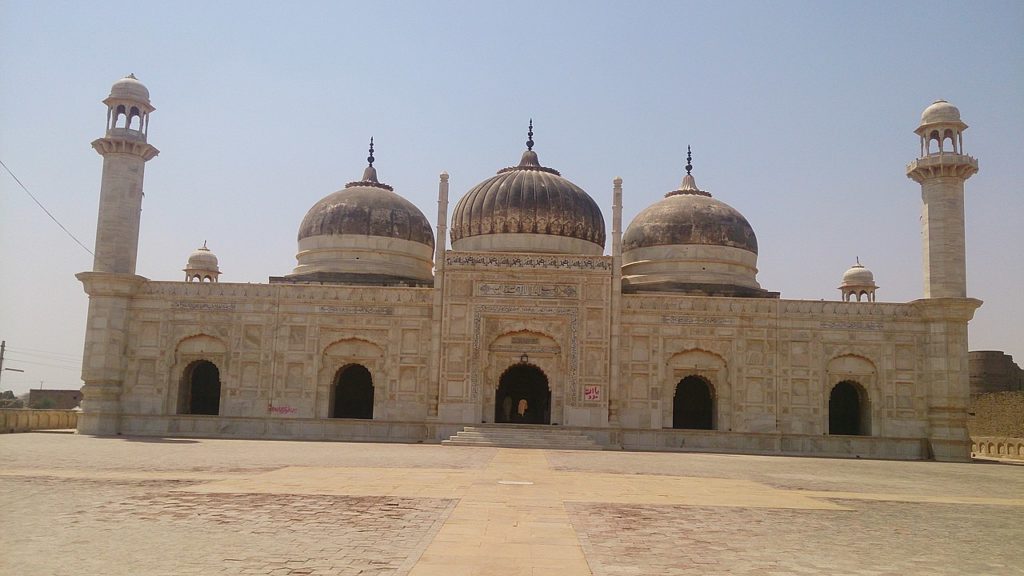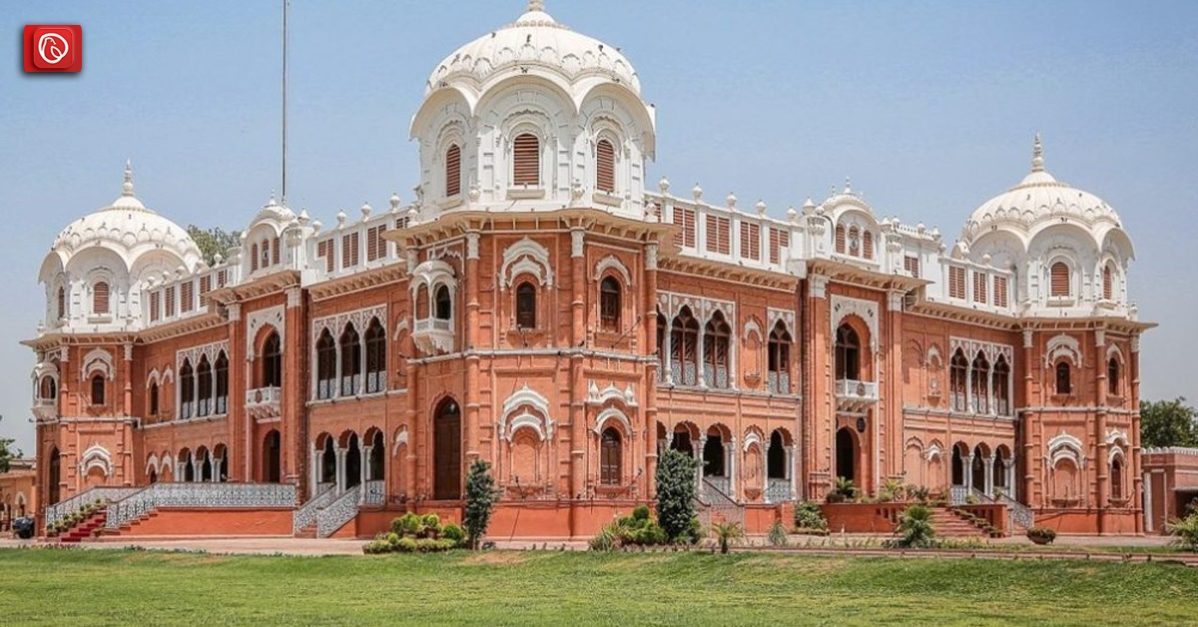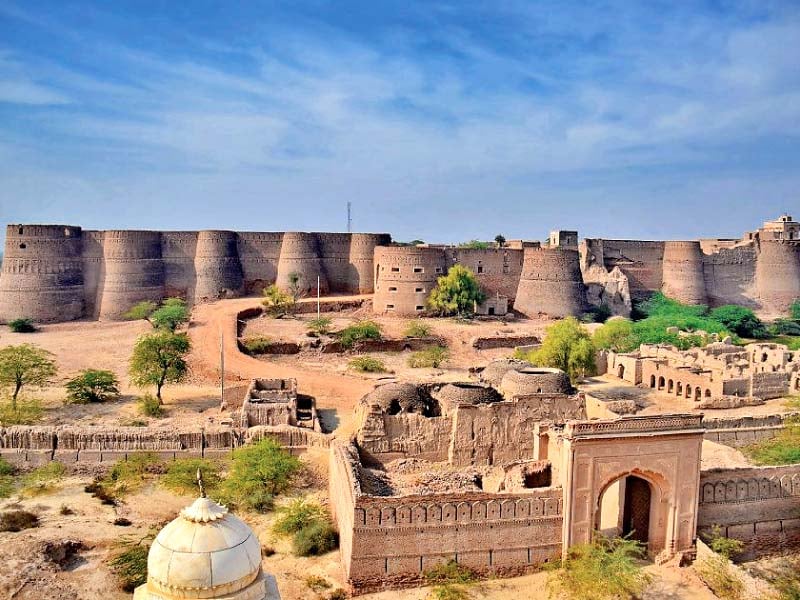Nestled near the Cholistan Desert in Punjab, Bahawalpur boasts a rich historical heritage and opulent architecture that entices visitors to explore its beauty. Established in 1748 and ruled by the Abbasi family of Nawabs until 1955, this city has left behind a legacy of exquisite monuments from that era, each telling a story of its own.
In this blog, Graana.com shares all the details about some famous places in Bahawalpur.
List of Famous Places in Bahawalpur
Bahawalpur, once the princely state of the Abbasi family, is renowned for its rich historical significance and vibrant cultural heritage. However, the city offers a captivating blend of ancient landmarks and modern attractions that leave every visitor awe-struck.
Following are some of the places that should be on your list while visiting Bahawalpur.
Noor Mahal

Noor Mahal was constructed between 1872 and 1875 under the visionary leadership of Nawab Sir Sadiq Muhammad Khan IV. Often referred to as the “Shan Jahan of Bahawalpur,” he built the palace as a tribute to his wife. However, she declined to reside there due to its proximity to the Basti Maluk Graveyard, so it served as a guest house for noble families and hosted distinguished visitors.
The palace’s architectural design was overseen by British engineer Mr. Henan. This resulted in a unique fusion of Italian chateau-style and Islamic elements. With grand arches, a church-style ceiling, and materials imported from Italy and England, the palace exuded opulence. Moreover, it boasted thirty-two rooms, including a basement with fourteen rooms. The rooms are adorned with mosaic floors, crystal chandeliers, and hand-carved gilded furniture.
After Pakistan’s independence in 1947, the Pakistan Auqaf Department took possession of Noor Mahal, and it was later leased and purchased by the Pakistan Army in 1971. Recognising its historical significance, the Government of Pakistan’s Archeology Department declared it a protected monument in 2001, allowing public access.
Moreover, the interior of Noor Mahal was adorned with Western artwork, portraits of the Nawabs, and a library with an extensive collection. The palace also housed a museum exhibiting precious ornaments, antique weapons, and other artefacts, offering insight into the royal lifestyle. A well-maintained public park with entertainment facilities and snack options was also part of the premises.
Today, Noor Mahal serves as a state guest house for hosting meetings and state durbars with foreign delegations. Visitors can access the palace from 9:00 am to 10:00 pm, with entrance fees applicable. In addition, the site also offers souvenirs and traditional handicrafts for purchase.
Darbar Mahal
Darbar Mahal is an exquisite palace in Bahawalpur, originally serving as the venue for courtly affairs and government offices during the era of the princely state of Bahawalpur. Constructed under the patronage of Bahawal Khan V, it was initially known as Mubarak Mahal and was completed in 1905.
Situated within the sprawling Bahawal Garh Palace Complex, it shares its vicinity with other palaces like Nishat Mahal, Farrukh Mahal, and Gulzar Mahal. The palace complex is set in a vast 75-acre garden.
Furthermore, the architectural style of Darbar Mahal is a harmonious blend of local, Sikh, Arabic, and European influences. Moreover, the exterior boasts intricate carvings, fretwork, and stucco work, accentuated by grand entrance ways and jharoka balconies on all sides. The third floor is adorned with a Mughal-style chattri roof, featuring highly stylized octagonal turrets topped with Sikh-style domes at each corner.
Inside the palace, one can behold a captivating display of priceless 19th-century paintings, traditional jewellery, ornaments, and the Nawab family’s historic swords. Furthermore, the combination of these elements creates a captivating ambience that reflects the rich heritage and cultural fusion of the region.
Presently, the entire palace complex, including Darbar Mahal, is leased to the armed forces. Moreover, it is not accessible to the general public, preserving its historical significance for the admirers of architectural wonders and history enthusiasts.
Abbasi Mosque

Abbasi Mosque, built in 1849 by Nawab Bahawal Khan, is an exquisite religious site made entirely of pure marble. Situated next to Derawar Fort in Yazman Tehsil, this mosque stands as a symbol of Islamic architecture and devotion to the people of Bahawalpur.
Gulzar Mahal
Gulzar Mahal, a true architectural wonder, was the first building in Bahawalpur equipped with hidden electricity wires. Constructed between 1906 and 1909, this palace served as a residence for the women of the state. Surrounded by lush green gardens, the palace exudes European charm, making it a popular Palace to visit in Pakistan.
Derawar Fort
(Source: Pinterest)
Derawar Fort stands as a magnificent fortress in Pakistan. Situated approximately 20 km south of Ahmedpur East, the fortress’ forty bastions rise prominently against the backdrop of the Cholistan Desert and can be seen from afar. The imposing walls encompass a perimeter of 1,500 metres and soar up to a height of thirty metres.
The fort’s history dates back to the 9th century AD when it was constructed by Rai Jajja Bhati. He was a Hindu Rajput ruler belonging to the Bhati clan, as a tribute to emperor Rawal Deoraj Bhati. Originally known as Dera Rawal, over time, it became known as Dera Rawar and eventually, through pronunciation evolution, it is now known as Derawar.
During the 18th century, the fort came under the control of the Muslim Nawabs of Bahawalpur, who took it from the Sahotra tribe. Later, in 1732, Nawab Sadeq Muhammad, an Abbasi ruler, undertook renovations, shaping the fort into its current form. However, due to Bahawal Khan’s engagements at Shikarpur, the fort slipped from their grasp in 1747. Subsequently, Nawab Mubarak Khan regained control of the stronghold in 1804.
A fascinating discovery within the fort’s vicinity was the unearthing of 1,000-year-old catapult shells near a decaying wall, offering a glimpse into its ancient past. Moreover, the historic Derawar Fort holds the distinction of being the birthplace of Nawab Sadeq Muhammad Khan Abbasi V, the 12th and final ruler of the Bahawalpur state, who was born within its formidable walls in 1904.
Bahawalpur Central Library
The Bahawalpur Central Library, the second-largest library in Punjab, dates back to 1924. It presents a mesmerising blend of Gothic Revival and Victorian architecture. Housing over 100,000 books, old newspapers, and historic documents, the library is a treasure trove for book lovers and history enthusiasts alike.
Nishat Mahal
Nishat Mahal, situated near Gulzar Mahal, Farrukh Mahal, and Darbar Mahal, boasts an enchanting mix of white and red bricks surrounded by expansive lawns and gardens. Constructed between 1905 and 1911, this palace showcases European design influences and captivating historical significance.
Lal Suhanra National Park
As the largest national park in South Asia, Lal Suhanra National Park covers a vast area with diverse landscapes, including deserts, ponds, lakes, and lush greenery. Moreover, it is a designated UNESCO-endorsed park, it offers a perfect retreat for families and nature lovers seeking a serene and refreshing experience.
Farid Gate
The Fareed Gate, one of the famous places in Bahawalpur, stands as the only surviving gate in the old city. Founded in 1748 by Nawab Bahawal Khan I, this gate leads to old bazaars that still thrive at the heart of the city, providing an authentic glimpse into Bahawalpur’s cultural heritage.
Jamia Masjid Al Sadiq
Jamia Masjid Al Sadiq, with a capacity to accommodate 60,000 worshippers, stands as one of Punjab’s most stunning mosques. Built with white marble, the mosque draws inspiration from Lahore’s iconic Badshahi Mosque, making it a symbol of architectural excellence and spiritual devotion.
Conclusion
As you embark on a journey through famous places in Bahawalpur, you will find yourself immersed in a world of grandeur and history. The city’s architectural marvels stand as a testament to its glorious past and the artistic prowess of its builders. From the regal Noor Mahal to the awe-inspiring Derawar Fort, each site exudes its unique charm, leaving visitors in awe of Bahawalpur’s rich heritage.
FAQs
Is Bahawalpur safe for tourists?
Bahawalpur is safe for tourists. However, like any other destination, it’s essential to take standard precautions and be aware of your surroundings.
What is the best time to visit Bahawalpur?
The best time to visit Bahawalpur is during the winter months, from November to February when the weather is pleasant and suitable for exploring.
Can visitors enter the Noor Mahal at night?
Noor Mahal is open to the public during the day. It remains open from 9.am to 10.pm for the general public.
Are there guided tours available for these historical sites?
Yes, guided tours are available for many of the historical sites in Bahawalpur. This allows visitors to learn about the rich history and significance of each monument.
Can visitors explore the interior of Darbar Mahal?
Darbar Mahal is under the possession of Pakistan Army. Since it is under Army control, the general public is not allowed to visit this Mahal.
How can I reach Bahawalpur?
Bahawalpur is well-connected by air, road, and rail. If you’re travelling from abroad or distant cities, you can take a flight to Bahawalpur Airport. Alternatively, there are regular bus services and train connections from major cities within Pakistan.
Are there any shopping areas in Bahawalpur?
Yes, Bahawalpur boasts vibrant markets and bazaars where you can shop for handicrafts, textiles, and traditional jewellery.
Is photography allowed inside the palaces and museums?
Yes, photography is generally allowed inside most palaces and museums. However, some places may have restrictions on using flash photography or tripods to protect delicate artefacts and exhibits.
What are the nearby attractions to explore from Bahawalpur?
There are several interesting places to visit near Bahawalpur. The Cholistan Desert, and Uch Sharif are some of the noteworthy attractions.
This is all about famous places to visit in Bahawalpur. For more information, visit Graana blog.





